4A0-103 Nokia Alcatel-Lucent Multi Protocol Label Switching Free Practice Exam Questions (2025 Updated)
Prepare effectively for your Nokia 4A0-103 Alcatel-Lucent Multi Protocol Label Switching certification with our extensive collection of free, high-quality practice questions. Each question is designed to mirror the actual exam format and objectives, complete with comprehensive answers and detailed explanations. Our materials are regularly updated for 2025, ensuring you have the most current resources to build confidence and succeed on your first attempt.
A router has two admin groups defined (GREEN=1 and RED=3). An interface is associated to both admin groups. What value will be shown in the Admin Group sub-TLV for this interface?
Click on the exhibit.
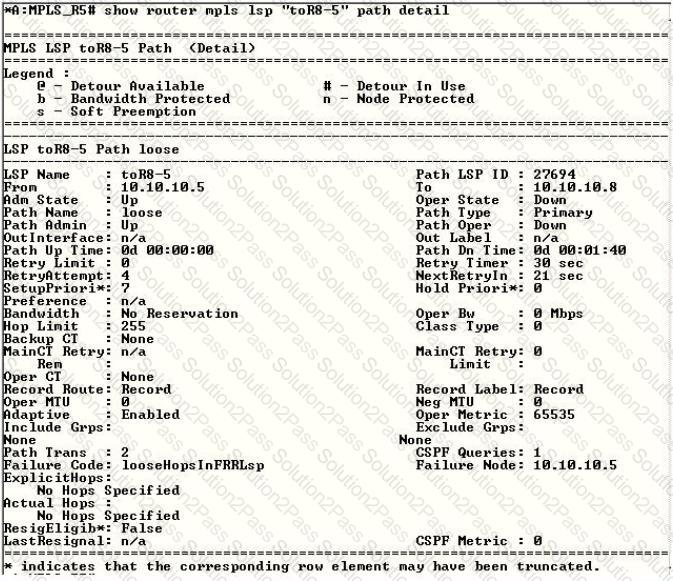
LSP "toR8-5" requests fast reroute protection. What could be done to remove the Failure Code shown?
Click on the exhibit.
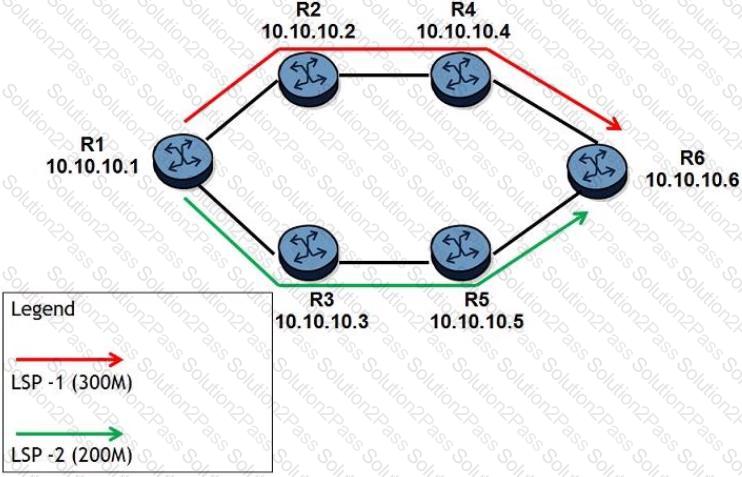
Initially, all links along the path R1-R2-R4-R6 have 400Mbps unreserved bandwidth and all links along the path R1-R3-R5-R6 have 800Mbps unreserved bandwidth. Shared Explicit reservation style is used and Make-Before-Break is enabled. Both fully loose LSPs have been signaled as shown. Later, the configured bandwidth for LSP-1 is changed to 400Mbps. Which of the following is TRUE?
All links have 1Gbps unreserved bandwidth initially and all LSPs have the least-fill feature enabled. After the two LSPs have been signaled as shown, two new LSPs are configured. LSP-3 is signaled first with 600Mbps reserved. LSP-4 is signaled after with 800Mbps reserved. All LSPs have the same setup and hold priorities. Which paths will CSPF choose for LSP-3 and LSP-4?
Which of the following describes constraint-based routing?
Which of the following about MPLS fast reroute is TRUE?
Click on the exhibit.
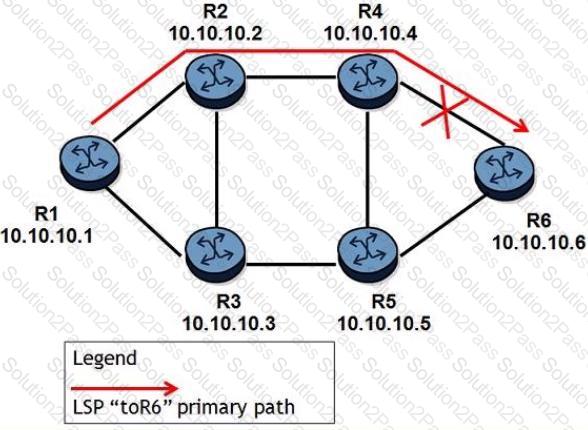
An LSP path is established on router R1 toward router R6. After router R4 detects that the link between routers R4 and R6 goes down, which of the following will affect the failure propagation time?
Click on the exhibit.
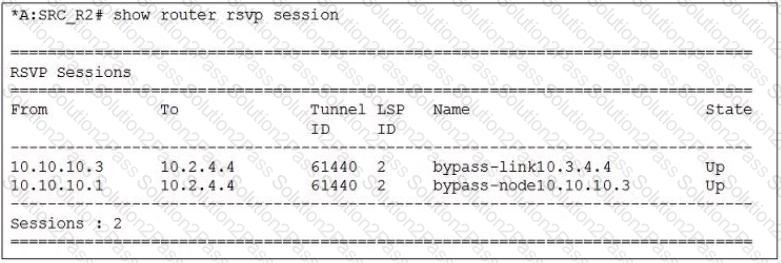
Which of the following about the bypass tunnel is FALSE?
Which of the following about configuring an LSP path definition on an Alcatel-Lucent 7750 SR is FALSE?
Click on the exhibit.
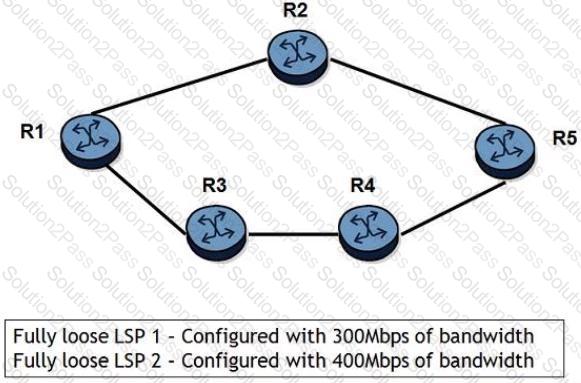
Initially, all links have 800Mbps of unreserved bandwidth. All links are of equal costs. Shared explicit reservation style is used. LSP 1 is signaled first with a setup and hold priority of 2. Then, LSP 2 is signaled with setup and hold priority of 5. Both LSPs go from R1 to R5. Which of the following is TRUE?
Which of the following is NOT an advantage of MPLS shortcuts for BGP traffic?
Click on the exhibit.
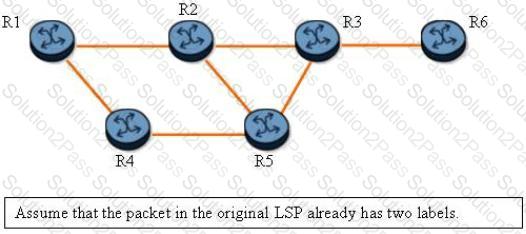
An LSP traverses the path R1-R2-R3-R6 and facility fast reroute is enabled. If the protected LSP carries one transport label and one service label, how many labels will be on the bypass tunnel if router R2 fails?
Click on the exhibit.
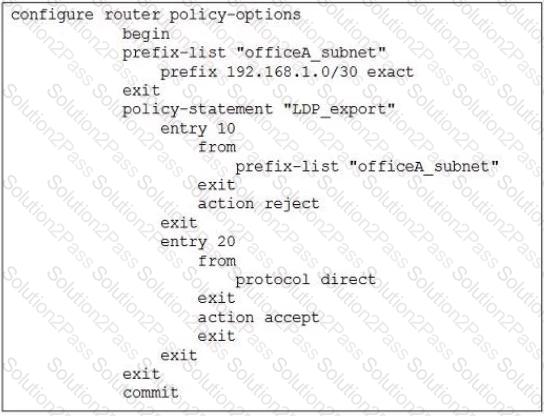
This policy is applied as an LDP export policy. In addition to the FECs learned from its neighbors, which FECs will appear in this router's LIB?
Which of the following about Fast Reroute node protection tunnels is FALSE?
Click on the exhibit.
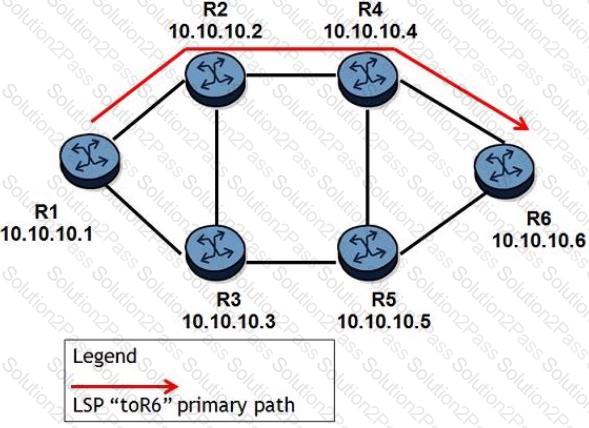
An LSP traverses R1-R2-R4-R6 and facility fast reroute with link protection is enabled. All links have the same cost. Which of the following about PLRs and MPs is TRUE?
Click on the exhibit.

An LDP-over-RSVP tunnel is established between routers R1 and R6. There is a VPN service running between routers R1 and R6. Which of the following is TRUE?
Click on the exhibit.
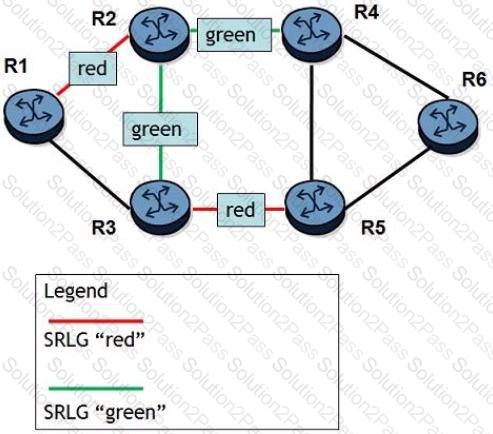
An LSP's primary path takes R1-R3-R5-R6. Its fully loose secondary path is configured for SRLG. All links are of equal cost. Which path will the secondary path take?
Which of the following about Link TLVs found inside Type 10 Opaque LSAs is FALSE?
On a point-to-point link, two directly connected routers set different interface hello timeout values. Router R1 uses 15 seconds, while router R2 uses 30 seconds. What happens to the LDP adjacency?
Which of the following statements regarding DiffServ-TE LSPs is true?
